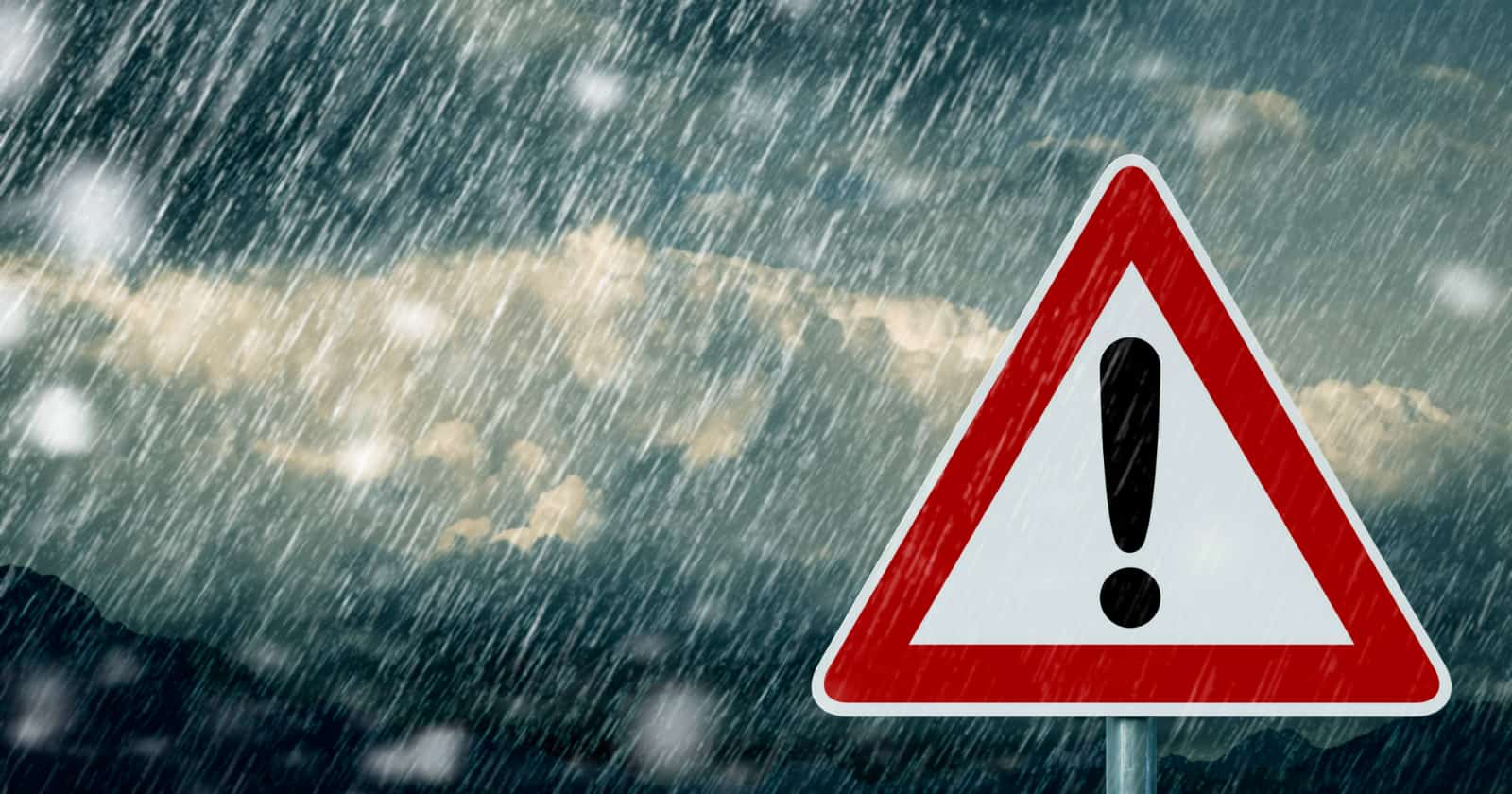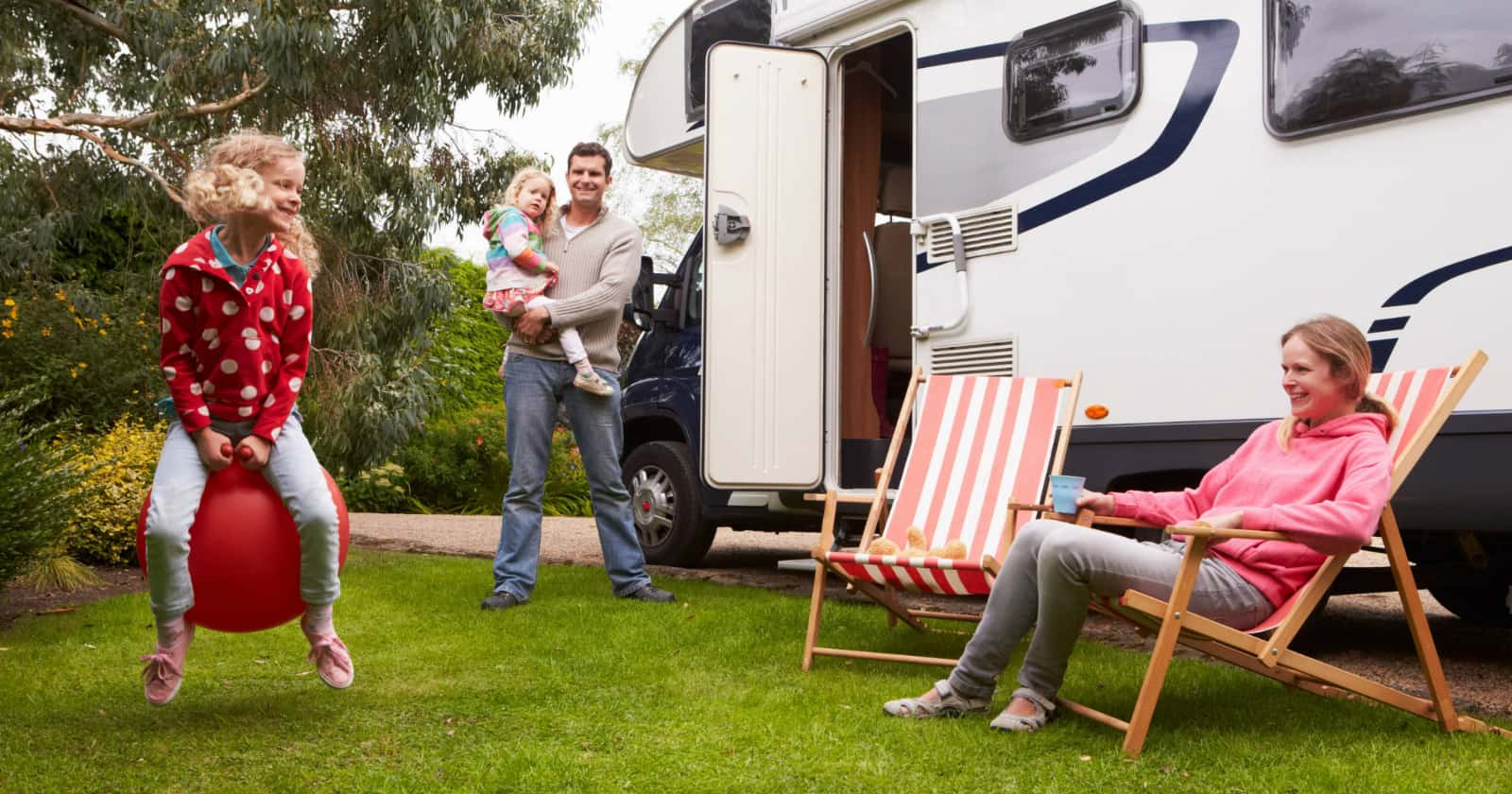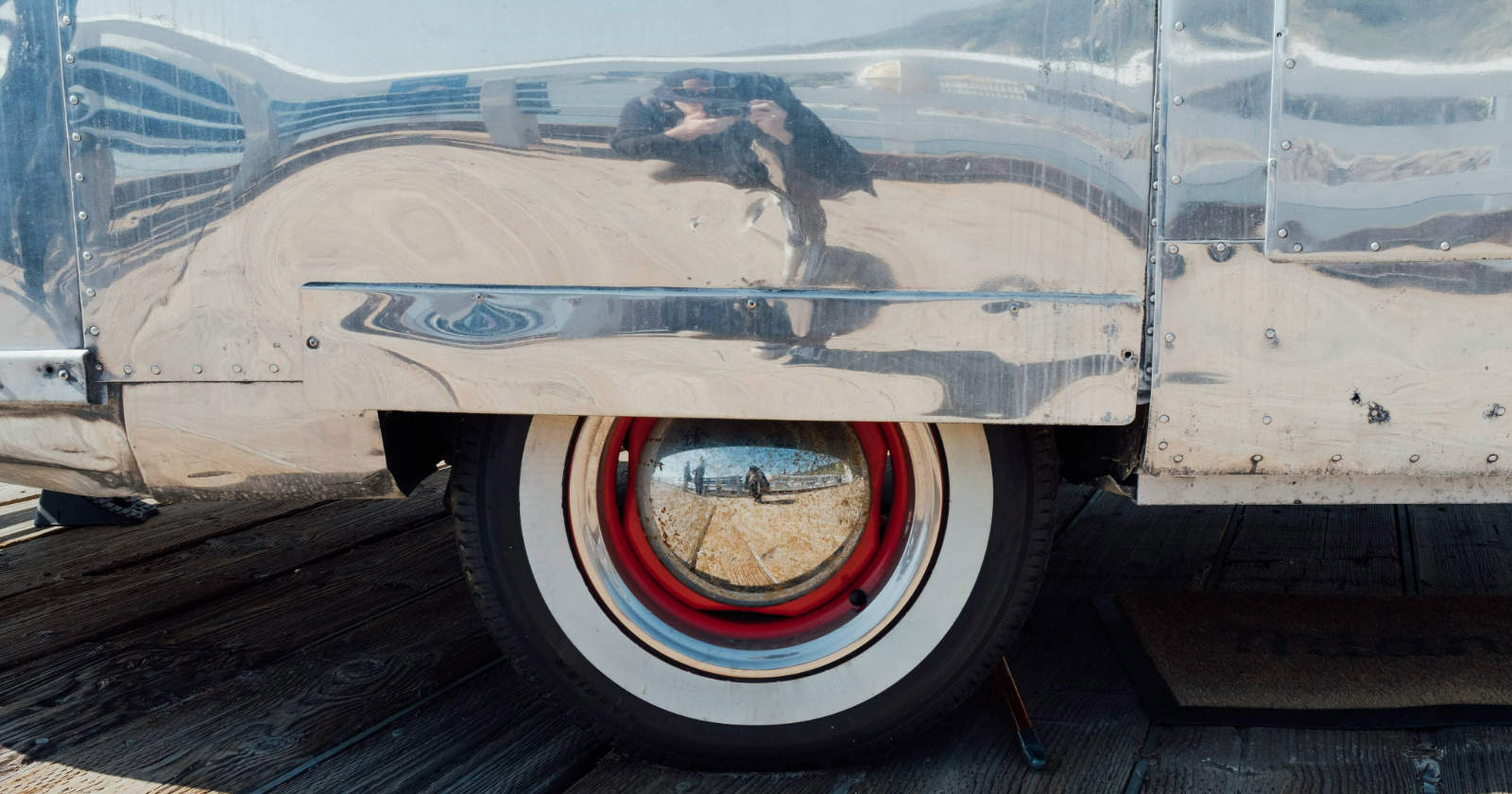
What’s the Best RV Traction in Snow and Ice?
If you are traveling in the winter with your RV, then you should consider adding snow chains or snow socks for your RV tires. But which is better? In this article, we will be looking at snow chains versus snow socks. We will also be looking at when you need them.
Benefits of traction devices such as snow chains or socks
If you are driving in winter conditions with a lot of snow and ice or through mountainous terrain then you might need a traction device.
Trailer tires are not drive tires, so you may think that you don’t need to add a traction device. You wouldn’t put chains on the front tires of a 2-wheel drive car. Alternatively, you may opt to add cargo weight above your tires to help with traction. That being said, there may be some benefit to adding a traction device such as snow chains or socks for your RV.
Drive tires provide traction to get the truck going and keep it moving, while the trailer tires just kind of go along for the ride.
Jim Park from Trucknews.com
Snow chains or socks can provide just enough lateral control to keep your trailer from passing you on a snowy hill. These kinds of traction devices can prevent sideways slippage when you are driving in unfavorable conditions.
Snow chains
Snow chains are devices fitted to the tire of your vehicle to provide maximum traction when driving in the snow and ice. They are also called tire chains or drag chains.
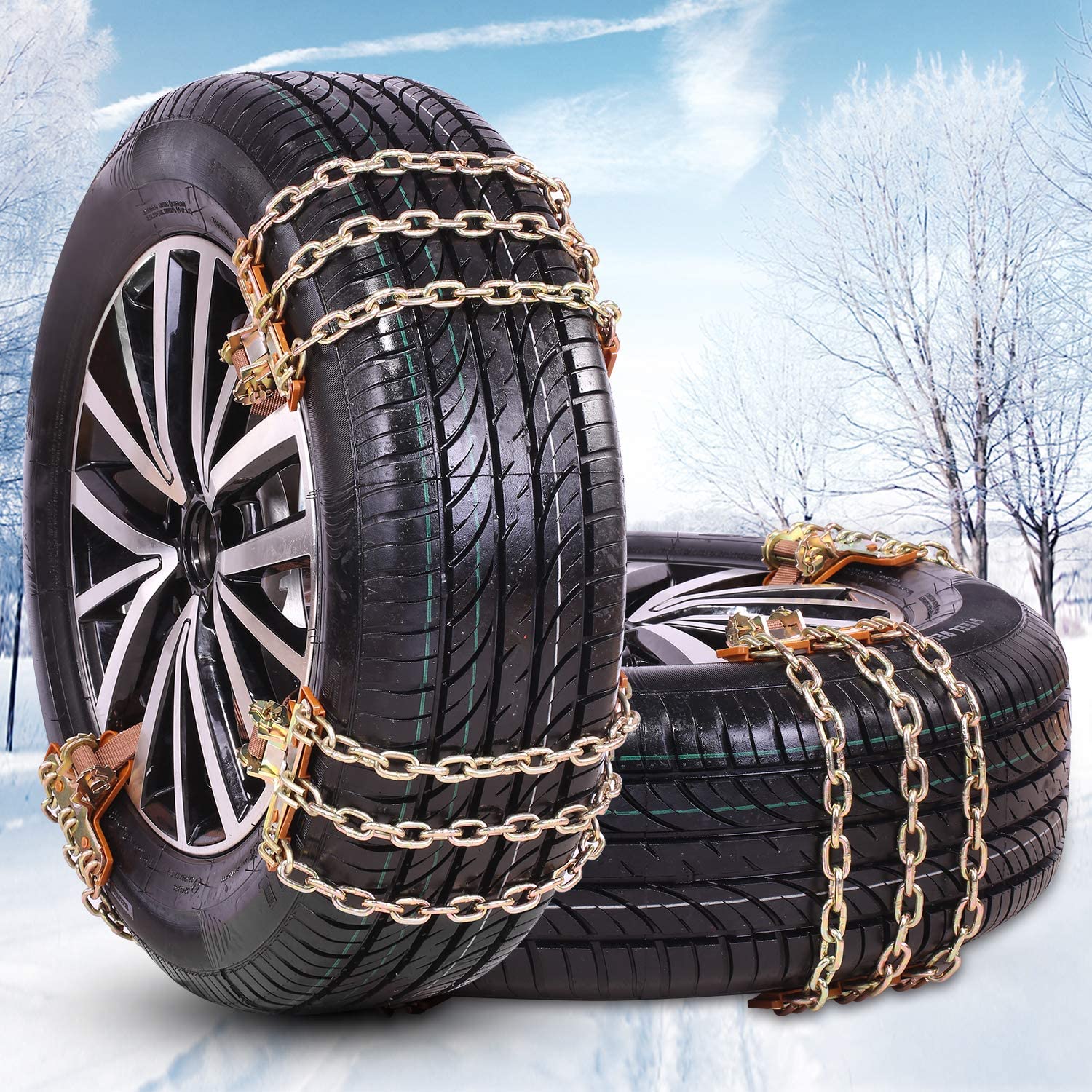
Snow chains are attached to the drive wheels of the vehicle. Although named after steel chain, they may be made of other materials. They may be found in a variety of patterns and strengths.
When purchasing snow chains, they are typically sold in pairs. They are often sold to match a particular tire size. Some designs may be adjusted to fit a variety of tire sizes.
Pros & cons of snow chains
As a pro, snow chains provide the greatest amount of traction on ice and deep or packed snow.
As far as cons, driving with chains may reduce your fuel efficiency. In addition, you must reduce your driving speed to approximately 30 mph. You can damage the pavement if you drive on dry pavement with chains.
Tire chains are also heavy and can be cumbersome to store and transport.
Snow socks
Snow socks are devices made of woven fabric that wrap around the tires to increase traction when driving on snow and ice. They are also called tire socks or auto socks.
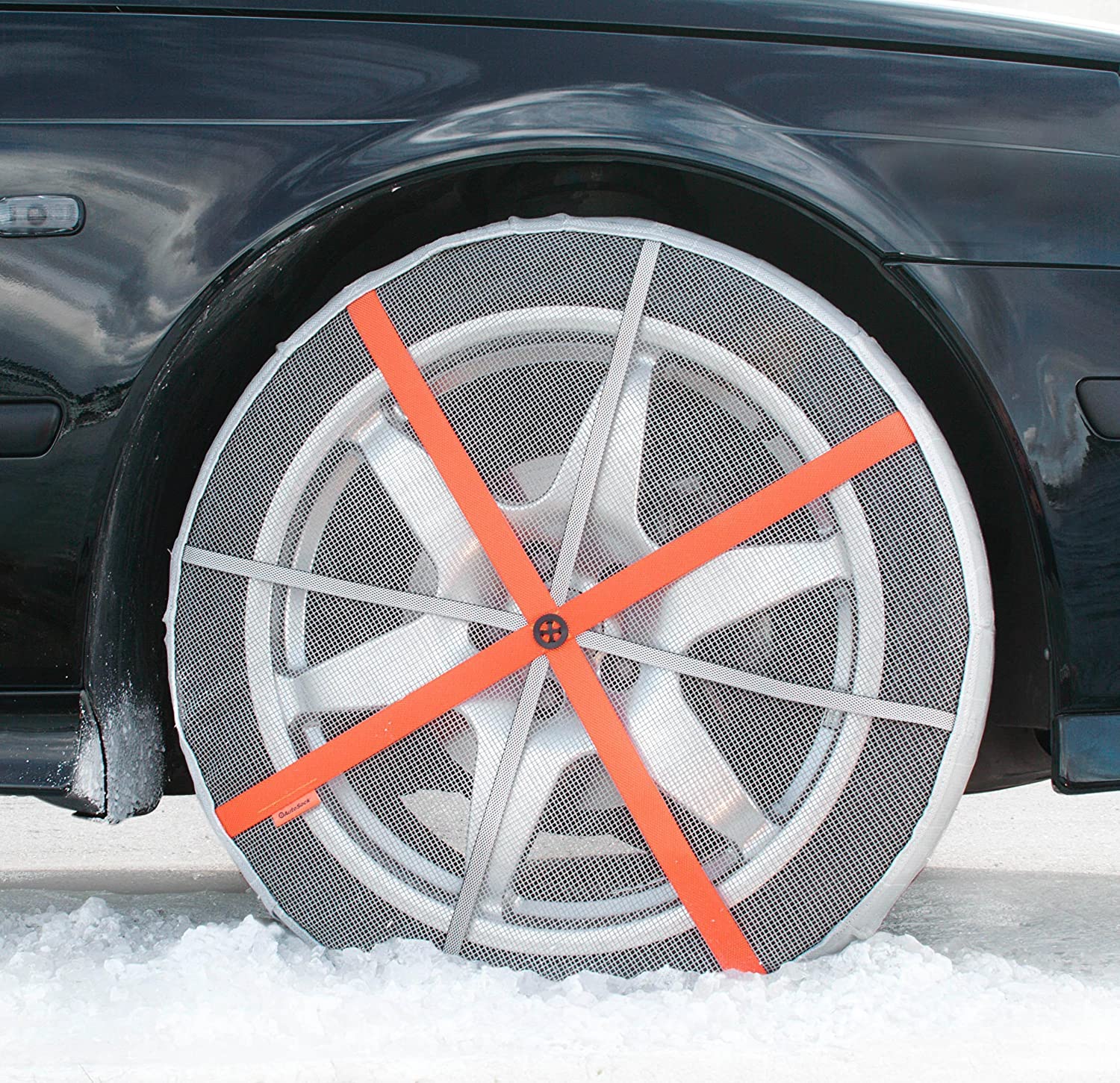
The woven textile covers the entire vehicle tire tread and becomes the contact point between the tire and the road. An elastomer keeps the sock in place.
Snow socks work to create traction by penetrating the thin film of water in snow or ice. This connects the vehicle directly to the road surface by creating dry friction.
When compared to snow chains, snow socks create traction on the surface of the layer and chains create traction by compression.
Pros & cons of snow socks
The pros of snow socks is they may be easier to install. They may also be better for lower clearance vehicles. Some brands may be compatible with studded tires.
The cons are that they are more susceptible to damage when the road conditions are dry. You must also reduce your driving speed to 30 mph (or lower).
Unfortunately, snow socks do not universally replace snow chains. When a state law indicates that snow chains must be used, you can’t automatically assume that snow socks can be used in their place. You must first double check that the brand of snow sock you have is approved by the governing body.
When do you need snow chains or snow socks?
If you are only pulling your RV in favorable conditions then you likely will never need snow chains or socks.
If you are daring and heading out for some winter camping then you need chains depending on your state laws. Some states require chains on trailers during certain periods of the year, if the truck has chains on, or if the trailer has brakes.
For example, the transportation laws in Oregon require that chains be placed on one tire on either side of one axle on trailers with brakes. For medium duty vehicles (such as RVs or buses), there must be chains on one tire on each side of the drive axle. If you are towing a trailer behind your RV or bus, you must also have chains on the trailer.

In the United States, there are 11 states that require that you carry chains:
- California
- Colorado
- Idaho
- Montana
- Nevada
- New Mexico
- Oregon
- South Dakota
- Utah
- Washington
- Wyoming
In Canada, there are some provinces which require chains and some that recommend them. In some provinces, there are requirements that state you must have winter tires on your vehicle and trailer during certain months of the year.
If you are serious about winter camping and heading out to a spot in the mountains or where the weather might turn into a blizzard, it is probably a good idea to carry a traction device such as snow chains or socks. Before heading out, check your local state laws as well.
Want to read more? Check out these great articles:

